Tennessee is top-ranked state in the nation for its laws protecting and responding to child trafficking survivors
WASHINGTON, NOVEMBER 15, 2023—Tennessee is the first state to receive an A in Shared Hope International’s Report Cards on Child and Youth Sex Trafficking, released today. (See Tennessee’s Report Card and related resources.) As the only U.S. nonprofit organization working in every state to advance legislative protections for child and youth sex trafficking survivors, Shared Hope’s 2023 Report Cards for all 50 states and Washington, D.C., gave the majority of states–32–a grade of F, while Florida (B), Minnesota (C), California (C), and Washington (C) were the other states ranked in the top five highest grade earners.
The Report Cards are used to press for a national standard of victim-centered justice, which can be achieved only if all states are actively working to develop and implement robust protections and just responses to children and youth who have experienced trafficking. Through the Report Cards, Shared Hope is pushing states to ensure all children have access to protective care and services that help survivors heal and rebuild their lives.
“Tennessee is at the forefront of the fight to end human trafficking with historic investments in law enforcement and public-private partnerships to serve survivors,” said Gov. Bill Lee. “Human trafficking has no place in our state, and we are committed to building on our progress, improving laws, and protecting the most vulnerable among us.”
“Governor Lee and the General Assembly continue to keep human trafficking response a top priority for Tennessee, and thanks to Shared Hope for their continued drive to ensure survivor leaders inform the next decade of progress in the fight to combat this crime,” said Margie Quin, Commissioner of the Tennessee Department of Children Services.
Key highlights on Tennessee’s progress under the Report Cards project include:
- Overall most improved state (from 2021-2023, raised score by 28.5 points).
- Nation’s first “A” state and top scorer in both 2022 and 2023.
- Leads the nation for laws related to identification and response to survivors of child sex trafficking and stakeholder training.
- Provides for a survivor-centered multi-disciplinary team response to child sex trafficking cases.
- Extends foster care services to youth under 24 years of age and also urges the private, nonprofit community to establish a network to provide information, assistance, services, and supports to persons from 16 to 24 years of age who were in foster care when they turned 18.
- Appropriated over $3,000,000 in state funds to community-based service providers to support the development and provision of specialized services for trafficking survivors.
- Of the 30 states that statutorily prohibit the criminalization of minors for prostitution, Tennesee was one of the first, having enacted this critical legal protection for trafficked children in 2011.
“We applaud the incredible progress that Tennessee has made this year and since the Report Cards on Child and Youth Sex Trafficking were initially released in 2021,” said former U.S. Congresswoman and Shared Hope Founder and President Linda Smith. “We hope this progress will inspire and encourage the many states that continue to struggle in their legislative efforts. The persistent gaps in state laws create a wild patchwork of statutes across the country, with the number and quality of legal protections and responses literally all over the map. Regardless of state of residence, no minor should be punished for their own trafficking victimization. Instead, these minors deserve critical services and care.”
The Report Cards are the result of a comprehensive analysis and assessment of all legal responses to child and youth sex trafficking in each state. While Shared Hope recognizes a range of policy, practice, and cultural responses to sex trafficking victims in each state, the Report Cards evaluate only statutes and use 40 policy goals in six issue areas in its grading system. States are assigned up to 2.5 points for each policy goal for a possible total score of 100 (with a possibility of up to 10 extra credit points) and then assigned a letter grade – A, B, C, D, or F – based on their score.
“As states make significant legislative reforms to move away from criminalizing survivors, access to appropriate services is critical to successful implementation of safe harbor laws,” said Christine Raino, Senior Director of Public Policy at Shared Hope. “This necessary and encouraging shift is demonstrated by this year’s top-scoring state, Tennessee, which was an early leader in prohibiting the criminalization of children for prostitution, and has also appropriated substantial state funds to ensure access to specialized services for trafficked children and youth.”
The national average of numerical scores on the 40 policy goals is 57.9 for 2023. The average has risen from 51.2 in 2022 and 47.9 in 2021, the year that Shared Hope strengthened its grading criteria to shift the focus from criminal laws to victim-centered responses and services. Prior to that, Shared Hope had issued its annual Report Cards for ten years under a different evaluation framework emphasizing criminal law responses.






